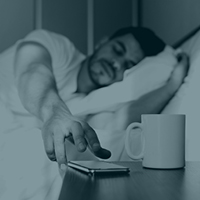1 CEC
Presented by Benjamin D. Boudreaux, PhD
The aim of this course is to introduce sleep into the concept of the 24-hour movement paradigm, consider the impact of sleep on health, and take away key factors of the movement prescription to improve health.
In the first course in this series, we considered the impact of sedentary behavior on health outcomes. But in the 24-hour movement paradigm, one also must consider the role of sleep. While sleep may not seem like physical inactivity, we do not “turn off” during sleep. In fact, some brain regions are more active during sleep than while we are awake, and some hormones are secreted selectively during sleep.
We define sleep as a reversible behavioral state involving altered consciousness and reduced responsivity to external stimuli, usually occurring with closed eyes, behavioral inactivity and while recumbent, but the exact physiology of sleep remains a mystery.
In this course, we will review the current understanding of sleep and its part in the 24-hour movement paradigm. We will answer these key questions:
- How much sleep do I need?
- What percentage of U.S. adults meet sleep recommendations?
- What is one of the most common sleep disorders?
- Is sleep associated with risk?
- What are the stages of sleep?
- Are physical activity and sleep related?
- Are sedentary behavior and sleep related?

